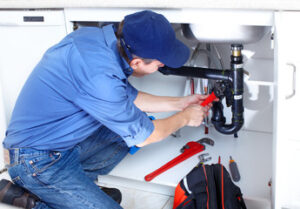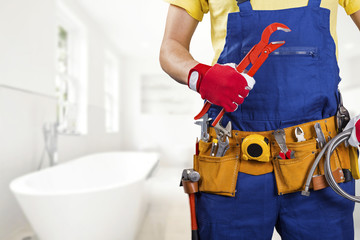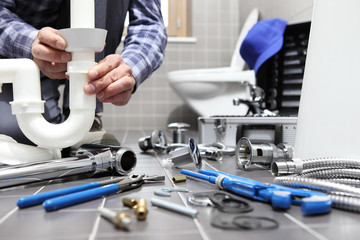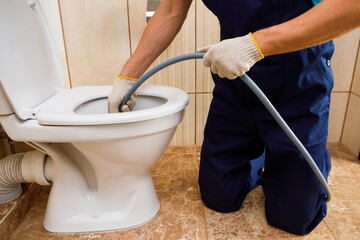Plumbing provides safe, clean water and removes waste to maintain hygienic living conditions. It includes pipes, fixtures and appliances like toilets, sinks and showers. It also involves the installation, repair and maintenance of these systems.

Plumbing is regulated at the federal and state levels to ensure safety, efficiency and environmental protection. These regulations govern everything from the materials used to the qualifications of plumbers. Visit https://www.castlerockplumbingllc.com/ to learn more.
The water supply lines are the pipes that carry fresh water to your home’s faucets and fixtures. They are also found behind your toilets, in your hot water heater and running to your outdoor faucet for watering the lawn and garden. Because they are constantly full of pressurized water on a regular basis, these lines must be made from materials that can withstand the demands placed upon them. If they are not well cared for, they can be damaged and cause flooding. Water lines can also be subject to less dramatic problems such as a slow leak, which can lead to extensive water damage over time.
Water supply lines are often buried in the ground and may be exposed to environmental conditions that could adversely affect their integrity, such as extreme temperatures or the presence of solvents, fuels and organic compounds in soil and/or groundwater. Where such detrimental conditions exist, a chemical analysis of the soil and ground water must be completed to determine if the water service piping is acceptable for installation.
A plumbing contractor should know about the materials used in the construction of the water supply piping, including their durability and capacity to withstand the pressures that they are subjected to. They should also be familiar with the codes and regulations that govern water supply systems in the jurisdiction in which they are working.
The quality of a house’s water supply can be affected by many factors, including climate change. Drier weather, changes in the amount of precipitation that falls as rain versus snow, and earlier spring snowmelt are all likely to have an impact on some water supplies. Non-climate related issues such as increased demand and aging infrastructure can also have an effect on the reliability of a household’s water supply.
Sewage Disposal
Sewage disposal is a vital process to protect public health and the environment. It removes harmful pathogens and other contaminants from wastewater to prevent water pollution. It also reduces the need for commercial fertilizers and improves soil quality. Sewage can also be used to generate renewable energy through processes such as anaerobic digestion and hydrothermal liquefaction.
A sewage disposal system is comprised of pipes, manholes, and inspection chambers that convey sewage to a treatment plant or other point of discharge. It also includes interceptor sewers, sanitary sewers, combined sanitary and storm sewers, and other plants, works, instrumentalities, and properties that are used for the collection, transportation, treatment, or disposal of sewage.
The sewage treatment process uses physical, chemical, and biological methods to remove pollutants from wastewater. The final product, called effluent, can be released into surface waters or reused for irrigation. This process requires significant infrastructure and skilled personnel for operation and maintenance. It can also produce large quantities of sludge, which must be properly disposed of.
Advanced wastewater treatment plants use sophisticated technologies to remove a wide range of organic and inorganic contaminants from sewage. They can also recycle nutrient-rich water for irrigation or industrial use. These systems meet stringent environmental regulations and discharge standards. However, they are expensive to operate and maintain.
Septic tanks are underground chambers that collect and treat wastewater from individual homes. The solids settle to the bottom and form sludge, while the liquids flow into a drain field where they are absorbed into the ground. Septic tanks are typically cheaper than centralized sewerage systems, but they can pose health risks and lead to environmental pollution if not properly maintained. Alternatives to septic tanks include cesspools, which are similar but do not have a drain field.
Vent Pipes
Behind your walls and under your floors lies a network of wastewater drainage pipes that work to keep your sinks and toilets draining and sewage waste away from your home. Plumbing vents are essential to this process, as they regulate air pressure and prevent harmful sewer gases from entering living spaces.
Without ventilation, a negative pressure can build inside the pipes, blocking or slowing down water flow and creating the conditions for clogs. Plumbing vents provide a path for air to circulate into the pipes, equalizing pressure and preventing vacuum locks. They also allow sewage waste and water to escape into the atmosphere, keeping your home free of foul odors.
In addition to regulating air pressure, plumbing vents also help maintain the water seals in your drain traps, keeping them dry and effective. This prevents harmful gasses, such as methane and hydrogen sulfide, from seeping back into your home through the drains, posing health risks and causing unpleasant odors.
There are several different types of plumbing vent pipes, each designed for specific purposes and locations. The most common type is the soil vent pipe, which extends vertically from the drainage system, piercing through the roof to open into the air. This is the most important pipe for preventing dangerous gases from entering living spaces.
Other plumbing vents include the drain vent, which fastens to the back or side of a drain, and the vent stack, which connects to a building’s main vent line. In some cases, where two fixtures are installed on the same wall, a sanitary vent can be used to share one vent with both fixtures. These plumbing vents must be sized according to building codes, ensuring they will not become blocked or damaged over time.
Plumbing Codes
Plumbing codes set strict guidelines for installation and repair of plumbing systems. These rules ensure that all plumbing professionals work according to the same standards and keep homeowners safe from dangerous consequences. Understanding these rules is an essential part of becoming a plumber. It is also a good idea for homeowners to learn about plumbing codes and standards so they can make informed decisions when it comes to home renovation or repair projects.
The most important role of plumbing codes is ensuring the safety of building occupants by preventing backflow and sewage contamination. They also establish requirements for water and energy efficiency and environmental sustainability. These standards help us achieve a comfortable and sustainable living environment.
For example, plumbing codes specify that drainpipes should slope down at least 1/4 inch per running foot to prevent flooding. They also set standards for pipe sizing based on the potential demand of installed fixtures. Incorrect sizing can cause problems such as low water pressure and leaks.
Plumbing codes also regulate how pipes should be supported and insulated. This attention to detail can prevent serious problems down the line, such as burst or frozen pipes.
In addition to ensuring the safety of occupants, plumbing codes also help reduce water waste by setting limits on how much water can be used by each fixture. This helps protect the environment and saves money for homeowners.
While the International Plumbing Code (IPC) and Uniform Plumbing Code (UPC) set a general standard for plumbing practices, they often vary by location. For example, local codes may require that drainpipes be sloped at a specific angle or that water pressure be controlled to avoid flood damage. It is essential for plumbers to understand and follow these regulations to avoid fines or other penalties.
Plumbers
Plumbers are skilled laborers who install and repair the pipes, fixtures, and appliances that facilitate water, gas, and waste disposal in residential, commercial, and industrial settings. They use a wide range of tools and equipment to diagnose and fix issues like leaks, clogs, and malfunctioning components. They also interpret blueprints and building codes to plan and execute plumbing projects.
Plumbers typically work alone or in small teams, although large commercial and industrial jobs may require them to collaborate with other technicians and engineers. They must be comfortable working in a variety of environments, including confined spaces, at heights, and in extreme temperatures. They also need to adhere to strict safety protocols when handling hazardous materials and operating powerful equipment.
A career as a plumber can be very rewarding, especially for those who enjoy working with their hands and providing essential services to their community. However, the job can also be physically demanding and requires extensive training to become fully qualified. Plumbers must be ready to tackle any plumbing emergency, from burst pipes in the middle of the night to clogged drains in the kitchen. They often spend long hours on their feet, bending over or crawling in tight spaces, and lifting heavy equipment.
Plumbers are also on-call 24/7 to respond to emergencies, so they must be willing to work odd hours and travel to remote locations. In addition to standard plumbing equipment like wrenches and pipe cutters, they often use specialized tools such as hydro jets and drain snakes to unclog pipes and drains. They also need to wear protective gear when working with dangerous chemicals or in confined spaces. Safety equipment includes gloves to protect hands from cuts and burns, masks to prevent inhaling harmful dust and fumes, and steel-toed boots to avoid injuries when navigating slippery floors or heavy machinery.



